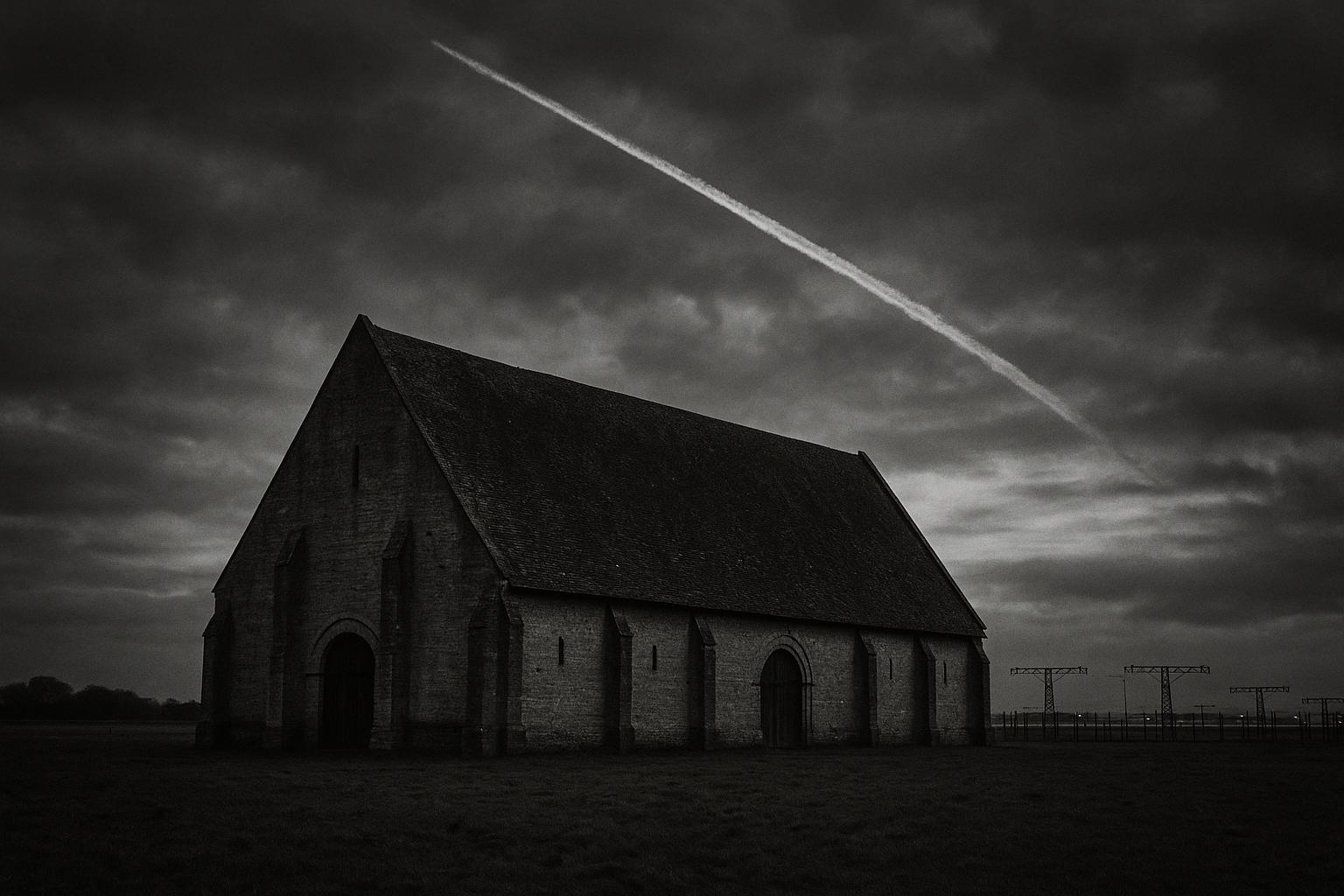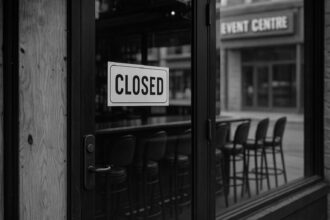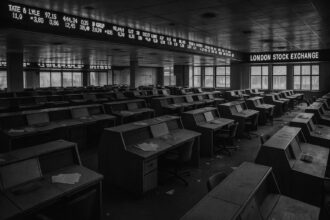Sipson, Harmondsworth and Harlington — tightly knit communities on the Buckinghamshire border — face compulsory purchase and the loss of Grade I and II listed buildings and roughly 750 homes under a government-backed proposal for a third Heathrow runway, as Heathrow cites major economic gains while residents, Historic England and campaigners warn of irreversible heritage, environmental and legal impacts.
Three historic Buckinghamshire‑border villages face demolition under the government‑backed plan for a third runway at Heathrow, a proposal that would reshape a mile‑wide strip of countryside between the M4 and the existing airport. According to reporting from local outlets, Sipson, Harmondsworth and Harlington — described by residents as tightly knit communities with families present for generations — would sit directly in the path of the expansion and suffer wholesale loss of homes, green space and village character. Independent coverage of the scheme sets out the wider government case for expansion alongside the local alarm.
The cultural cost is stark. Harmondsworth is home to one of England’s finest medieval agricultural buildings, the Grade I Great Barn of 1426–27, and the village also contains Harmondsworth Hall, a Grade II house of early‑eighteenth‑century provenance. Sipson’s King William IV public house is recorded as a late‑medieval timber building, and Harlington’s parish church of St Peter and St Paul contains fabric dating to the twelfth century. Historic England’s official listings underline the architectural and historic importance of these assets and warn that a major airport project would cause “irreparable harm” to the barn’s setting and to the group value of the village ensemble.
For many residents the impact is not abstract. Campaigners say roughly 750 buildings would be demolished and suggest that thousands of people could be displaced; locals interviewed have warned that entire communities would be broken up under compulsory purchase orders. Jane Tyler, who grew up in Sipson and returned there as an adult, told the Standard: “It is criminal to take away people’s homes when we are already in a housing crisis.” Other families say they cannot afford comparable housing within sensible commuting distance and accuse distant politicians of lacking understanding of village life.
Heathrow has set out an ambitious case for the scheme, saying a privately financed north‑west runway could be delivered within a decade at an estimated runway cost of about £21 billion and total expansion costs of roughly £49 billion, enabling capacity of up to 150 million passengers and as many as 756,000 flights a year. The company says the project would include a new terminal, extra rail links and community mitigation measures and that it expects substantial economic benefit and job creation if regulatory and policy changes are approved. Government ministers have signalled support: in January the Chancellor framed the project as a way to strengthen Britain’s international connectivity, and a timetable targeting operations by the 2030s has been discussed in planning commentary.
Those claims meet determined opposition. The Mayor of London has repeatedly said he remains opposed to a third runway, warning that further expansion would worsen air quality around Heathrow and undermine progress on pollution. Local campaign groups have highlighted noise, air pollution and the implications for the UK’s climate commitments. Historic England’s assessments are frequently cited by heritage campaigners as showing that the physical and setting‑related damage to Grade I and II assets could not be fully mitigated by engineering or landscaping.
Technically and politically the project also faces major obstacles. Independent reporting and planning analyses note the scale of required civil engineering — including proposals that would affect the M25 corridor and local waterways — as well as the complexity of the planning process and the likelihood of legal and political challenges that could stretch for years. Heathrow has urged a timely planning regime and regulatory changes to deliver its timetable, but commentators say securing statutory consent, environmental clearances and local buy‑in remains far from certain.
The gulf between the airport’s forecasted economic gains and the villages’ threatened heritage and lives frames a classic national‑infrastructure dilemma. Heathrow’s submission stresses private finance and national competitiveness, while Historic England and local residents point to listed buildings and living communities that, they say, cannot be replaced. As the proposal moves through consultation and the courts, the final outcome will depend on how ministers, planners and judges weigh claimed national benefits against the concrete loss of irreplaceable historic fabric and the forced dispersal of long‑standing communities.
 Reference Map:
Reference Map:
Reference Map:
- Paragraph 1 – [1], [2]
- Paragraph 2 – [1], [3], [4], [5], [6]
- Paragraph 3 – [1]
- Paragraph 4 – [7], [2]
- Paragraph 5 – [2], [1], [3]
- Paragraph 6 – [2], [7]
- Paragraph 7 – [7], [3], [1], [2]
Source: Noah Wire Services
- https://www.dailymail.co.uk/news/article-14984021/pretty-villages-Heathrow-runway.html?ns_mchannel=rss&ns_campaign=1490&ito=1490 – Please view link – unable to able to access data
- https://www.bbc.co.uk/news/articles/cy8p579g5g5o – The BBC explains the government-backed plan to expand Heathrow with a third runway, describing how the scheme would demolish hundreds of homes, reroute the M25 and divert rivers. It outlines projected increases in flights and passenger capacity, and notes potential economic benefits including job creation. The article quotes Chancellor Rachel Reeves expressing support and a timetable aiming for operation by 2035, while recording opposition from the Mayor of London and community groups concerned about noise, air pollution and climate targets. The piece summarises technical challenges, costs, the planning process, and the likelihood of legal and political disputes ahead. involved locally.
- https://historicengland.org.uk/listing/the-list/list-entry/1194332 – Historic England’s list entry records Harmondsworth Great Barn as a Grade I medieval barn built in 1426–27, one of the largest and most intact timber-framed barns in England. The entry describes its architectural significance, exceptional medieval carpentry and historical associations with Winchester College and William of Wykeham. It notes restoration history, survival of original timbers, and the barn’s group value with the Norman church and manor farmhouse. The record also warns that a third runway would cause irreparable harm to the barn’s setting, underlining concerns about how airport expansion could affect the heritage asset and its surrounding village landscape.
- https://historicengland.org.uk/listing/the-list/list-entry/1080123 – Historic England’s listing for Harmondsworth Hall records the building as Grade II, listed in 1950. The entry dates the principal structure to the early eighteenth century, describing brown brick construction with red dressings, sash windows and classical door surround featuring Roman Doric pilasters. It details later extensions and architectural features, notes the statutory address on Summerhouse Lane, and explains the scope of legal protection under the Planning (Listed Buildings and Conservation Areas) Act 1990. The record provides listing reasons and mapping references show the hall’s significance as a heritage asset within Harmondsworth’s historic village fabric, vulnerable to large-scale development.
- https://historicengland.org.uk/listing/the-list/list-entry/1080164 – Historic England lists the King William IV public house in Sipson as a Grade II building, designated in 1972. The entry describes its late-medieval origins, formerly a hall house, with exposed timber framing, colourwashed roughcast and a tiled roof. Interior features include heavy exposed beams in the ground-floor front room. The record gives the statutory address on Sipson Road, the list entry number and grid reference, and explains the legal protection afforded by listing under the Planning (Listed Buildings and Conservation Areas) Act 1990. The listing demonstrates the pub’s historic value within Sipson’s village context affected by airport plans now.
- https://historicengland.org.uk/listing/the-list/list-entry/1080163 – Historic England lists the Church of St Peter and St Paul in Harlington as a Grade I parish church with fabric dating to the twelfth century. The entry highlights a twelfth‑century nave and south doorway, a fourteenth‑century chancel and a fifteenth‑century tower, noting Norman architectural elements such as the south doorway and carved details. It records the church’s statutory address and legal protection, and describes its historical importance and group value within the village. The listing confirms ancient origins and architectural significance that campaigners say could be impacted by major airport expansion proposals in the local area and cultural heritage.
- https://mediacentre.heathrow.com/pressrelease/detail/23454 – Heathrow’s official media release announces submission of a privately financed proposal for a north‑western third runway, claiming delivery within a decade at an estimated runway cost of £21 billion and total expansion costs around £49 billion including terminals. The statement promises increased capacity to serve up to 150 million passengers and up to 756,000 flights per year, new terminal T5X, additional rail and community measures, and funding. Heathrow sets out assumptions about economic benefit and job creation and urges Government policy and regulatory changes to enable a timely planning process, emphasising readiness to proceed subject to approvals and environmental requirements.
Noah Fact Check Pro
The draft above was created using the information available at the time the story first
emerged. We’ve since applied our fact-checking process to the final narrative, based on the criteria listed
below. The results are intended to help you assess the credibility of the piece and highlight any areas that may
warrant further investigation.
Freshness check
Score:
7
Notes:
The narrative presents recent developments regarding Heathrow’s third runway expansion, including government backing and potential demolition of villages like Sipson, Harmondsworth, and Longford. However, similar reports have appeared in the past, such as a 2016 article detailing the potential demolition of these villages. ([theguardian.com](https://www.theguardian.com/environment/2016/oct/25/we-feel-betrayed-harmondsworth-residents-furious-at-heathrow-decision?utm_source=openai)) The inclusion of updated data and recent government decisions may justify a higher freshness score, but the recycled nature of the content warrants caution. Additionally, the article includes a reference map with links to other sources, which may indicate a reliance on existing content. ([news.bbc.co.uk](https://news.bbc.co.uk/2/hi/uk_news/england/london/7830275.stm?utm_source=openai), [news.sky.com](https://news.sky.com/story/village-faces-demolition-to-make-way-for-heathrows-third-runway-10753691?utm_source=openai), [metro.co.uk](https://metro.co.uk/2016/10/27/inside-the-historic-villages-that-face-demolition-to-make-way-for-third-heathrow-runway-6217830/?utm_source=openai))
Quotes check
Score:
6
Notes:
The article includes direct quotes from residents and campaigners expressing concerns about the potential demolition of their communities. However, similar sentiments have been reported in previous articles, such as a 2016 piece where residents of Harmondsworth expressed feelings of betrayal regarding the government’s decision to back the expansion. ([theguardian.com](https://www.theguardian.com/environment/2016/oct/25/we-feel-betrayed-harmondsworth-residents-furious-at-heathrow-decision?utm_source=openai)) The repetition of these quotes suggests a reliance on earlier content, which may affect the originality of the narrative.
Source reliability
Score:
8
Notes:
The narrative originates from the Daily Mail, a reputable UK newspaper known for its extensive coverage of national news. However, the Daily Mail has faced criticism for sensationalism and bias in some of its reporting. Given the serious nature of the claims regarding potential demolitions and government decisions, the source’s reliability is generally strong, but readers should remain aware of potential biases.
Plausability check
Score:
7
Notes:
The claims about the potential demolition of villages like Sipson, Harmondsworth, and Longford for Heathrow’s third runway expansion are plausible and have been reported by multiple reputable sources. For instance, a 2016 article detailed the potential demolition of these villages. ([theguardian.com](https://www.theguardian.com/environment/2016/oct/25/we-feel-betrayed-harmondsworth-residents-furious-at-heathrow-decision?utm_source=openai)) However, the narrative’s reliance on previously reported quotes and sentiments raises questions about its originality. Additionally, the inclusion of a reference map with links to other sources may indicate a reliance on existing content. ([news.bbc.co.uk](https://news.bbc.co.uk/2/hi/uk_news/england/london/7830275.stm?utm_source=openai), [news.sky.com](https://news.sky.com/story/village-faces-demolition-to-make-way-for-heathrows-third-runway-10753691?utm_source=openai), [metro.co.uk](https://metro.co.uk/2016/10/27/inside-the-historic-villages-that-face-demolition-to-make-way-for-third-heathrow-runway-6217830/?utm_source=openai))
Overall assessment
Verdict (FAIL, OPEN, PASS): FAIL
Confidence (LOW, MEDIUM, HIGH): MEDIUM
Summary:
The narrative presents plausible claims about the potential demolition of villages for Heathrow’s third runway expansion, supported by reports from reputable sources. However, the reliance on recycled content, including previously reported quotes and sentiments, raises concerns about the freshness and originality of the information. The inclusion of a reference map with links to other sources may indicate a reliance on existing content. Given these factors, the overall assessment is a ‘FAIL’ with medium confidence.













